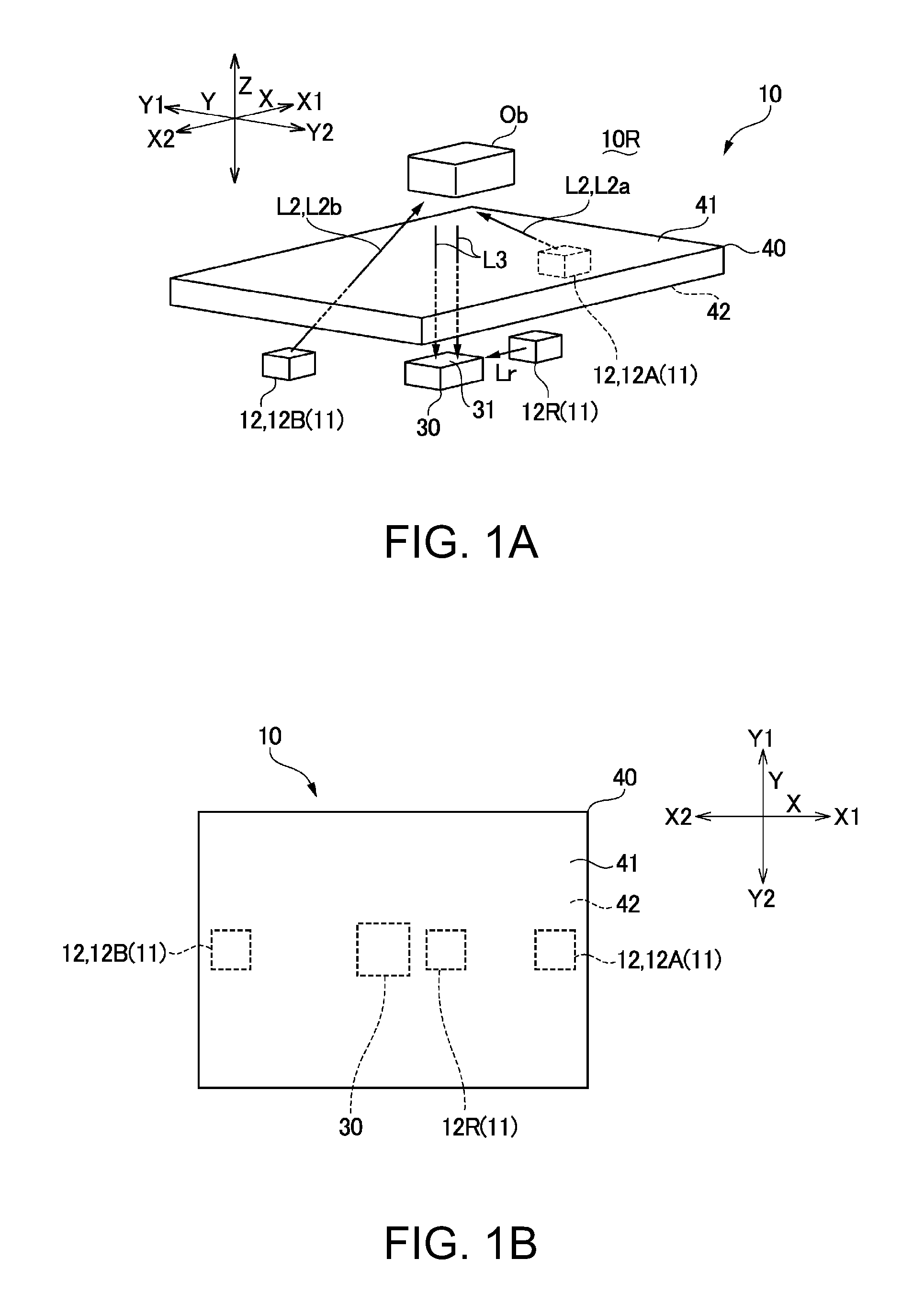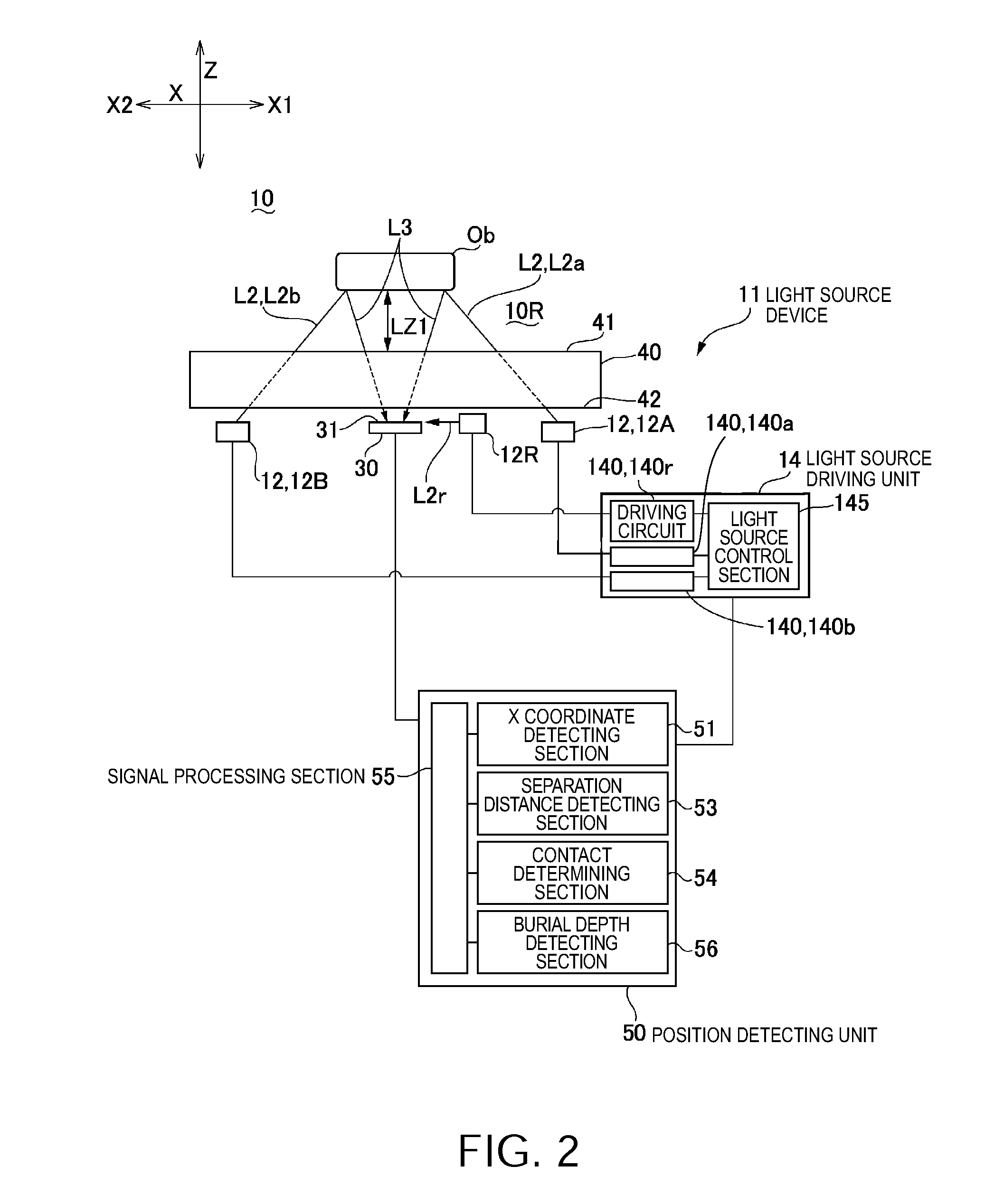Optical-type position detecting device, hand apparatus, and touch panel
a technology imaging device, which is applied in the direction of instruments, manufacturing tools, transportation and packaging, etc., can solve the problems of inability to detect the gripping force, long processing time of the imaging operation result, and high cost of optical-type position detecting device using imaging device, etc., to achieve accurate detection of contact, low cost, and superior responsiveness
- Summary
- Abstract
- Description
- Claims
- Application Information
AI Technical Summary
Benefits of technology
Problems solved by technology
Method used
Image
Examples
embodiment 1
Entire Configuration
[0033]FIGS. 1A and 1B are explanatory diagrams schematically showing a major portion of an optical-type position detecting device according to Embodiment 1 of the invention. FIG. 1A is an explanatory diagram showing the three-dimensional disposition of constituent elements of the optical-type position detecting device, and FIG. 1B is an explanatory diagram showing the planar disposition of the constituent elements of the optical-type position detecting device. FIG. 2 is an explanatory diagram showing the entire configuration of the optical-type position detecting device according to Embodiment 1 of the invention. FIGS. 3A and 3B are explanatory diagrams schematically showing the state in which a target object is brought into contact with the translucent member and the like in the optical-type position detecting device according to Embodiment 1 of the invention. FIG. 3A is an explanatory diagram schematically showing the state in which the target object is brought...
embodiment 2
[0093]While in Embodiment 1 an example in which the position (the X coordinate) of the target object Ob in the in-plane direction is detected, in addition to the separation distance of the target object Ob from the translucent member 40 and contact between the target object Ob and the translucent member 40, by using the common light detector 30 in the optical-type position detecting device 10 has been described, an example in which the YX coordinates of the target object Ob is further detected will be described with reference to FIGS. 7A to 10D.
Entire Configuration
[0094]FIGS. 7A and 7B are explanatory diagrams schematically showing a major portion of an optical-type position detecting device according to Embodiment 2 of the invention. FIG. 7A is an explanatory diagram showing the three-dimensional disposition of constituent elements of the optical-type position detecting device, and FIG. 7B is an explanatory diagram showing the planar disposition of the constituent elements of the o...
PUM
 Login to View More
Login to View More Abstract
Description
Claims
Application Information
 Login to View More
Login to View More - R&D
- Intellectual Property
- Life Sciences
- Materials
- Tech Scout
- Unparalleled Data Quality
- Higher Quality Content
- 60% Fewer Hallucinations
Browse by: Latest US Patents, China's latest patents, Technical Efficacy Thesaurus, Application Domain, Technology Topic, Popular Technical Reports.
© 2025 PatSnap. All rights reserved.Legal|Privacy policy|Modern Slavery Act Transparency Statement|Sitemap|About US| Contact US: help@patsnap.com



